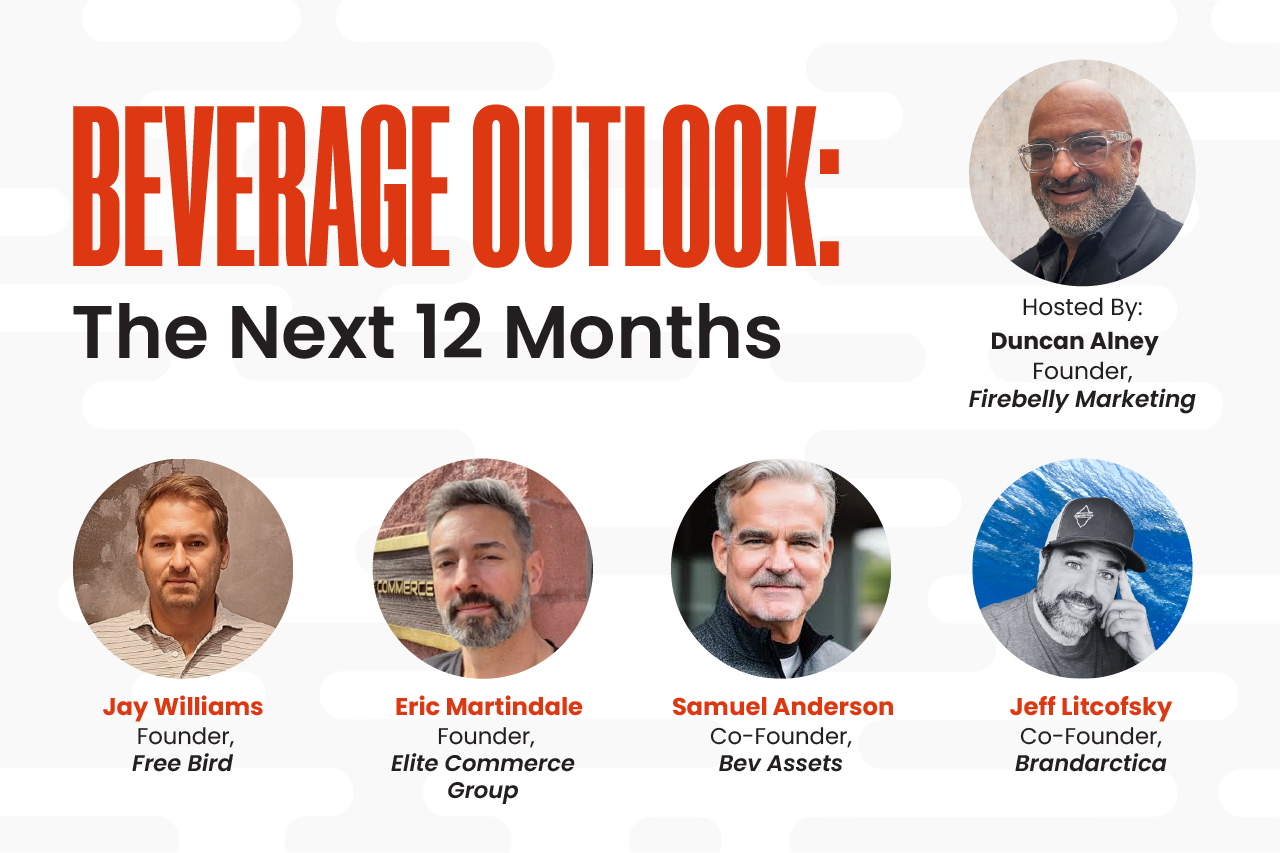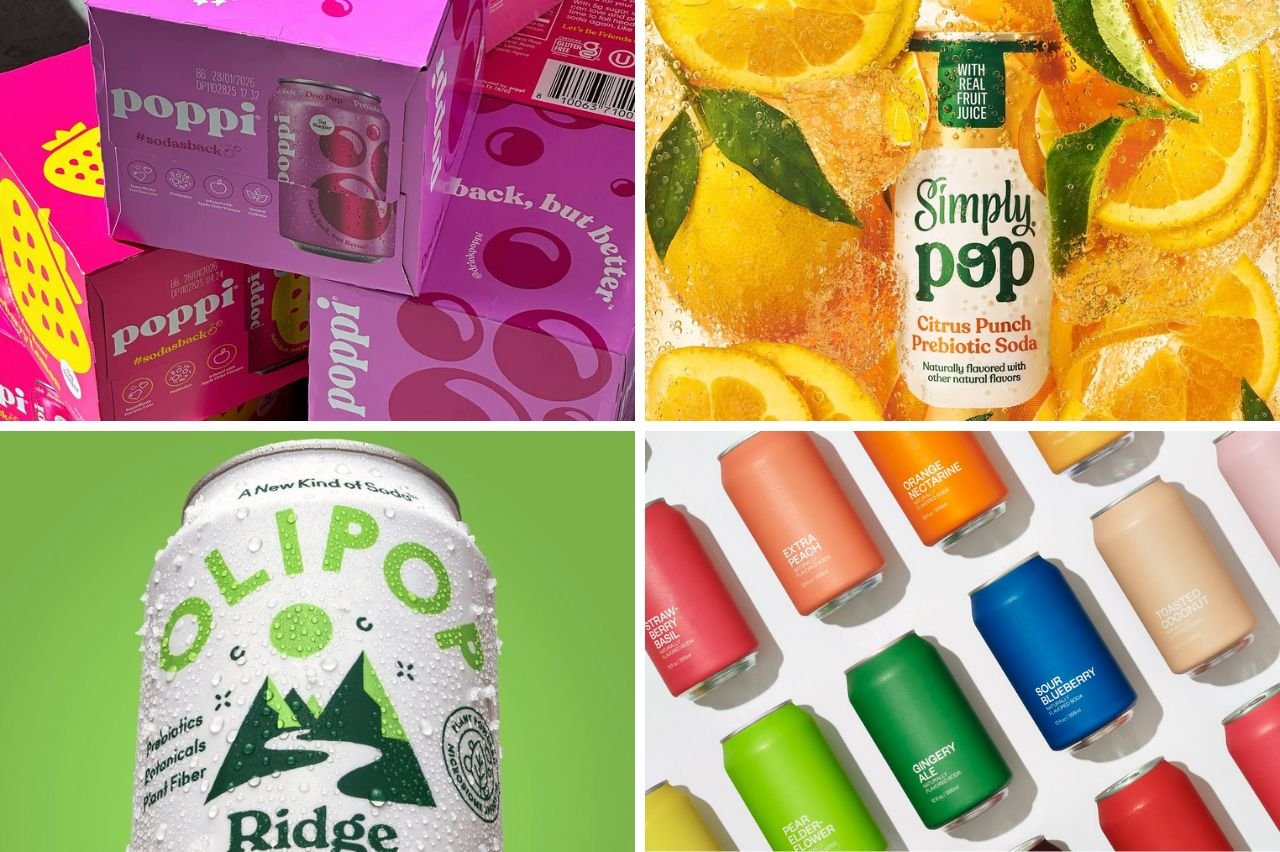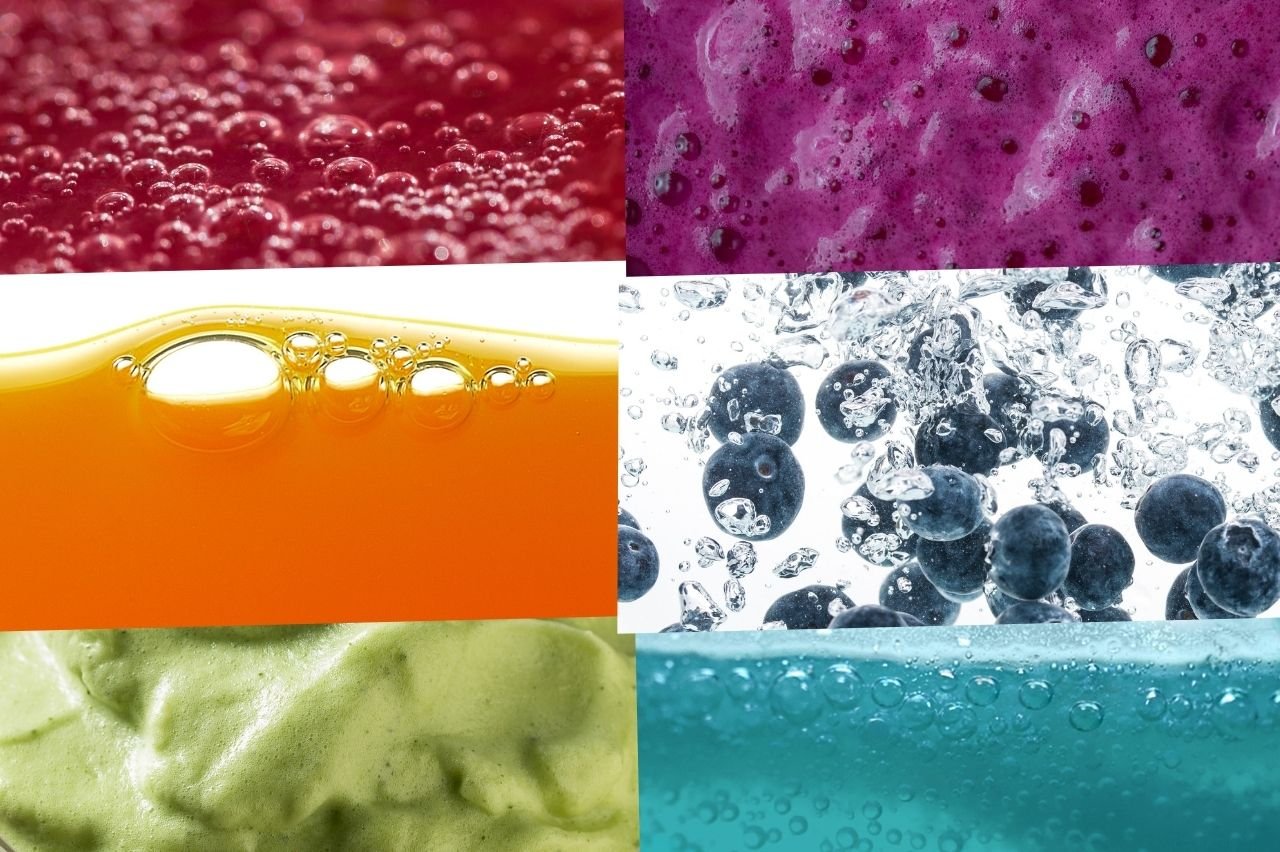Beverage Industry Trends 2025: Expert Panel Reveals Market Insights and Growth Strategies for CPG Brands

The beverage industry continues to evolve at an unprecedented pace, presenting both challenges and opportunities for CPG brands entering or expanding in the market.
On February 21, 2025, Duncan Alney, founder of Firebelly Marketing, hosted an exclusive panel discussion featuring industry leaders who shared crucial insights about market trends, distribution strategies, and brand building in today’s competitive landscape.
Below, you’ll find key takeaways from the event.
Executive Summary
- Non-alcoholic beverage innovation is driving significant market growth
- Premium offerings are commanding higher price points than ever before
- LinkedIn is a crucial channel for beverage brand founders
- Distribution strategies are evolving with the blurring of traditional channels
- Digital commerce and retail media are reshaping consumer engagement
- Brand storytelling and community building are crucial for success
The Rise of Premium Non-Alcoholic Beverages: A Market Analysis
The non-alcoholic beverage sector has emerged as a powerful force in the CPG space, with premium offerings achieving price points that rival their alcoholic counterparts. Jeff Litcofsky, Co-founder of Brandarctica, revealed that premium non-alcoholic wines are now commanding prices up to $119 per bottle.
Clearly, this signals a fundamental shift in consumer perception. It also presents a mouth-watering market opportunity.
“There is a lot of room for other entrants [like Liquid Death] in the category of brand centric beverages.”
— Jeff Litcofsky, Partner & CEO, Brandarctica
“Three key factors are driving the non-alcoholic beverage boom,” Litcofsky explained. “First, we’re witnessing a fundamental shift in consumer preferences toward wellness. Second, millennials and Gen Z are actively embracing the ‘sober curious’ movement. Finally, significant advancements in production technology have dramatically improved taste and mouthfeel profiles.”
Consumer Trends Shaping the Non-Alcoholic Market
- Wellness-focused purchasing decisions
- Premium experience seeking without alcohol
- Growing interest in functional benefits
- Demand for sophisticated flavor profiles
- Increased focus on sustainable packaging
Brand Building in the Modern Beverage Landscape
The Liquid Death Case Study: Redefining Beverage Marketing
The panel’s discussion of Liquid Death‘s success offered valuable insights into modern beverage marketing strategies. The brand’s approach to community building and marketing has created a blueprint for success in the category:
- Focus on brand community experience over product features
- Leverage of taboo arbitrage in marketing
- Creation of a lifestyle brand beyond the beverage category
- Strategic use of social media for community engagement
- Premium positioning in a traditionally commodity category
Jay Williams, founder of Free Bird, noted how Liquid Death’s success has created opportunities for innovative brands to follow suit. “They’ve become the Coca-Cola of their category, opening doors for brands like ours to innovate and expand the market,” Williams shared.
“Liquid Death is the Coke of the non-alcoholic beverage category right now – but, last I checked, Pepsi didn’t do so bad when they came in at number 2. There’s plenty of opportunity out there.”
— Jay Williams, Founder & CEO, Free Bird
The Power of LinkedIn for Brand Building
An Essential Tool for Beverage Founders
Social media is no longer a ‘nice to have’ in the beverage game. Many brands live and die based on the connections made through this wildly important medium.
And LinkedIn is the platform of choice for beverage founders.
“I put an hour a day into researching a topic and putting it into a LinkedIn post… But you get as much branding from commenting (if not more) than posting… Comments are how to tell if someone is for real.”
— Eric Martindale, Founder & CEO, Elite Commerce Group
Granted, simply posting on LinkedIn doesn’t guarantee success. Weak, substance-free content will quickly expose pretenders.
But don’t make the mistake of thinking that posting is enough. Commenting is where ‘the juice’ is (pun intended). Comments sections are where real connections are made… and severed.
Founders must walk the tightrope of contributing insightful thoughts to posts, without being disrespectful and raising the ire of the ‘LinkedIn mob.” Just remember that the pros of regularly posting on LinkedIn FAR outweigh the cons.
“[With LinkedIn] it feels a little bit like 2008-09 Twitter-era, when people would approach you at a conference using your handle… It’s become the ultimate way to build relationships.”
— Duncan Alney, Founder & CEO, Firebelly Marketing
Distribution Strategies for Success
Navigating the Modern Distribution Landscape
Samuel Anderson, Co-founder of Bev Assets, emphasized that distribution strategy must be considered from day one.
“There’s no point in presenting a brand without a distributor or wholesaler,” Anderson stated. His insights revealed several key considerations for beverage brands.
Multiple Path-to-Market Options:
- Direct-to-consumer (DTC) channels
- Traditional wholesalers
- Specialty distributors
- Hybrid distribution models
- E-commerce platforms
The Evolution of Traditional Distribution
The panel noted that traditional boundaries between different types of distributors are increasingly blurred, creating both challenges and opportunities:
- Beer wholesalers expanding into non-alcoholic categories
- Consolidation of distribution networks
- Integration of digital and physical distribution channels
- Rise of specialized beverage distributors
- Importance of regional distribution strategies
Digital Commerce and Retail Media Innovation
Eric Martindale, Founder of Elite Commerce Group, provided critical insights into the growing importance of retail media in driving in-store velocity.
The emergence of platforms like Instacart has created new opportunities for brands to connect with consumers. We live in a landscape where digital touchpoints drive physical sales.
Key Digital Commerce Trends:
- Integration of online and offline shopping experiences
- Growth of retail media networks
- Enhanced targeting capabilities
- Real-time inventory management
- Digital-first consumer engagement strategies
Operational Considerations for Beverage Brands
Supply Chain Challenges and Solutions
It’s uniquely difficult for beverage brands to secure reliable distribution in 2025. There are several factors that have caused this, including inflation and political uncertainty (particularly when it comes to shipping across borders).
The panel addressed current market challenges, including:
- Inflation impacts on raw materials
- Supply chain disruptions
- Production capacity constraints
- Inventory management strategies
- Sustainability requirements
Shelf Space Strategy
Remember – there is a finite amount of retail space. Every brand you see on a shelf means that 10 hours have had their dreams crushed. Having said that, founders can’t enter the space scared.
“It’s a tough spot for founders today… You got inflation, intensified competition [and] supply chain pressures.” -Duncan Alney, Founder & CEO, Firebelly Marketing
There’s still reasons to be optimistic. It’s just essential that brands recognize that the war for retail shelf space is cutthroat.
With limited retail shelf space available, brands must:
- Develop compelling shelf presence
- Create effective merchandising strategies
- Build strong retailer relationships
- Optimize product placement
- Demonstrate strong velocity metrics
Market Entry Strategies for New Beverage Brands
The panel emphasized several critical success factors for new brands entering the market:
Essential Elements for Success:
- Strong brand storytelling
- Elegant and distinctive packaging
- Clear target market identification
- Robust distribution strategy
- Digital-first marketing approach
- Community building focus
- Sustainable business practices
Future Outlook and Opportunities
Despite current market challenges, the panel identified numerous opportunities for innovative brands:
- Growing demand for premium non-alcoholic options
- Expansion of functional beverage categories
- Increasing interest in sustainable products
- Rising consumer willingness to pay for quality
- Evolution of distribution channels
Expert Recommendations for Beverage Brands
Based on the panel discussion, key recommendations for success include:
- Invest in brand building and community development
- Develop a comprehensive distribution strategy
- Leverage digital commerce opportunities
- Focus on premium positioning and quality
- Build authentic consumer connections
- Maintain operational flexibility
Taking Action in Today’s Market
While the current climate presents significant challenges, opportunities remain abundant for brands that can effectively navigate the complex landscape. Success requires:
- Deep understanding of market trends
- Strong brand positioning
- Strategic distribution partnerships
- Effective digital presence
- Operational excellence
Looking Ahead
The beverage industry continues to evolve rapidly, with new opportunities emerging for innovative brands. Make no mistake – THERE ARE REASONS FOR OPTIMISM.
Staying ahead of trends, maintaining operational flexibility, and building strong consumer connections will be crucial for success in 2025 and beyond.
Once again, you can watch the full webinar here.
Is your beverage brand ready to capitalize on these emerging opportunities? Contact Firebelly Marketing to develop a comprehensive social media strategy that drives real results in today’s competitive landscape. Our team of experts specializes in helping CPG beverage brands build strong digital presence and engaged communities.


